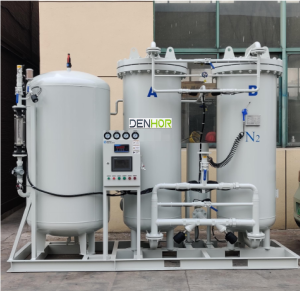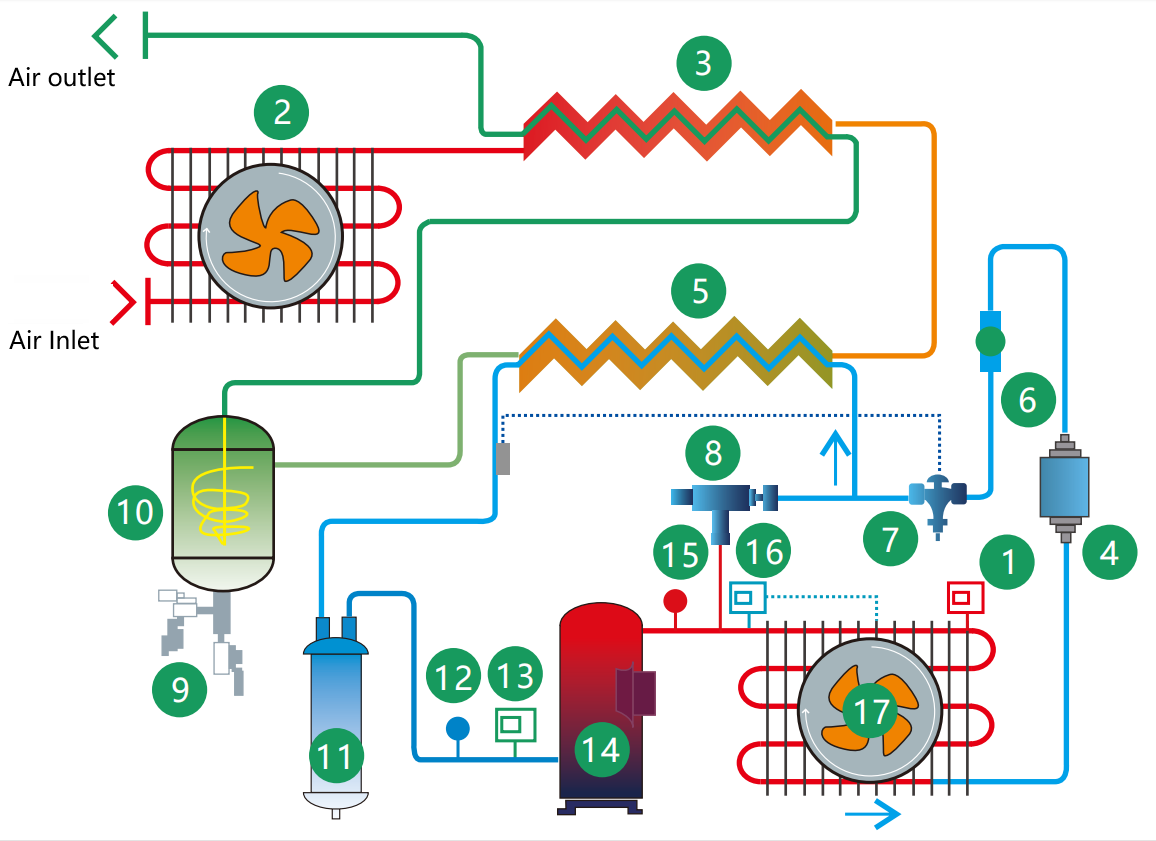Will membrane nitrogen generators be replaced by PSA nitrogen generators?
Release time: 2025-06-26
Membrane nitrogen generation and PSA (pressure swing adsorption) nitrogen generation are two different nitrogen preparation technologies, which differ in principle, performance and application scenarios. The membrane nitrogen generation method cannot be completely replaced by the PSA nitrogen generator . The reasons can be analyzed from the aspects of technical characteristics, application scenarios and economic efficiency:

PSA Nitrogen Generator
1.Technical Principle and Performance Comparison
1.1 Membrane nitrogen production technology
✅Principle : Utilizing the difference in permeability rates of polymer membranes to oxygen and nitrogen (the permeability rate of oxygen is about 3-5 times that of nitrogen), gas separation is achieved through pressure-driven production to produce nitrogen-rich gas.
✅Features :
- Purity range : usually 95%~99.5%, and the maximum does not exceed 99.9%.
- Gas production : Suitable for small flow rates (usually ≤500 Nm³/h). When the flow rate is too large, the number of membrane components needs to be greatly increased, and the cost rises.
- Energy consumption : There are no moving parts, only compressed air is required, and the energy consumption is low (about 0.2~0.4 kW・h/Nm³).
- Response speed : Fast startup (≤5 minutes), ready for use.
- Maintenance : The membrane components have a long life (5-8 years), no need to frequently replace parts, and low maintenance costs.
1.2 PSA nitrogen production technology
✅Principle : Carbon molecular sieve (CMS) has a stronger adsorption capacity for oxygen than nitrogen under high pressure. Nitrogen separation is achieved through periodic pressurized adsorption (oxygen is adsorbed) and decompressed desorption (oxygen is released).
✅Features :
- Purity range : flexibly adjustable from 95% to 99.999% (such as food grade, electronic grade high purity nitrogen).
- Gas output : Suitable for medium to large flow rates (50~5000 Nm³/h), with good flow stability.
- Energy consumption : Periodic pressurization/depressurization is required, and the energy consumption is relatively high (about 0.4~0.8 kW・h/Nm³), and the energy consumption is even higher in high-pressure scenarios.
- Response speed : Startup takes 10 to 30 minutes (the adsorption tower reaches a stable state).
- Maintenance : The life of carbon molecular sieve is about 5 to 10 years. Valves and adsorption towers need to be checked regularly, and the maintenance cost is slightly high.
2. The core reason why it cannot be completely replaced
2.1 Differences in purity requirements
- Limitations of membrane nitrogen production : It cannot meet the demand for high-purity nitrogen above 99.9% (such as in semiconductor manufacturing, pharmaceutical packaging, aerospace, etc.), while PSA nitrogen production can reach 99.999% purity through multi-stage adsorption.
- Advantages of PSA : In scenarios where high-purity nitrogen is required (such as nitrogen injection for lithium batteries to prevent oxidation and purging of electronic components), PSA is the mainstream choice.
2.2 Adaptability to traffic and scale
- Membrane nitrogen production : It is more economical in small flow scenarios (such as 10~100 Nm³/h). The equipment is small in size and flexible in installation (such as container-type integrated equipment). It is suitable for decentralized gas supply (such as field operations and small food packaging lines).
- PSA nitrogen production : When medium and large factories (such as chemical and metallurgical industries) need to continuously supply large amounts of nitrogen, the scale effect of PSA is more obvious (the gas output of a single set of equipment can reach thousands of cubic meters per hour), and the flow rate adjustment range is wider.
2.3 Trade-off between energy consumption and cost
- Membrane nitrogen production : lower energy consumption at low purity and small flow rates, low initial investment cost (membrane module price is lower than PSA adsorption tower), suitable for scenarios with limited budget or short-term use (such as temporary nitrogen supply).
- PSA nitrogen production : During long-term operation, if the purity and flow requirements are high, the unit energy consumption cost may be reduced due to technical optimization (such as double-tower/multi-tower design, waste heat recovery), but the initial investment is high.
2.4 Adaptability to special environments
- Membrane nitrogen production : sensitive to the quality of incoming air (oil, water, and dust will clog the membrane pores), and requires strict pretreatment; but has good temperature resistance (some high-temperature membranes can adapt to 80~120℃ environments).
- PSA nitrogen production : It has extremely high requirements on the oil content of the intake air (the carbon molecular sieve will be permanently inactivated when it comes into contact with oil), but its ability to resist dust and water vapor is slightly stronger, and it is suitable for complex working conditions (such as mines and oil fields).
3. Complementarity of application scenarios
| field | Membrane nitrogen production application scenarios | PSA nitrogen production application scenarios |
| Food Packaging | Nitrogen filling and preservation of ordinary bagged foods (such as potato chips and nuts) (purity 95%~99%) | Anti-oxidation of high value-added foods (such as baked goods, meat products) (purity ≥ 99.5%) |
| Pharmaceutical Industry | Non-sterile API storage (purity 98%~99%) | Sterile preparation production, drug packaging material purging (purity ≥ 99.99%) |
| Petrochemical | Wellhead blowout prevention, pipeline purging (low purity, high flow) | Catalytic cracking, hydrogenation reaction protection (high purity nitrogen + stable flow) |
| Electronics Manufacturing | General circuit board purging (purity 99%) | Chip packaging, semiconductor deposition (purity ≥ 99.999%) |
| New Energy | Photovoltaic module production (purity 99.5%~99.9%) | Lithium battery nitrogen injection (purity ≥ 99.99%, dew point ≤ -40℃) |
Conclusion: Technology complementarity rather than substitution
- Advantageous scenarios for membrane nitrogen production : low purity, small flow, decentralized, and low-cost requirements (such as small food factories, field projects, and tire inflation).
- The irreplaceable nature of PSA nitrogen production : high purity (≥99.9%), medium to large flow rate, and high stability requirements (such as high-end manufacturing, chemical industry, and medical treatment).
- Future trends : The two may be used in combination (such as membrane nitrogen pretreatment + PSA purification), or dynamically switched according to operating conditions to maximize efficiency.


